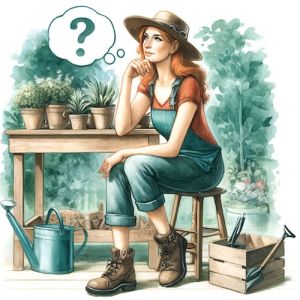The most frequently searched planting questions and answers
Welcome to the Gardener’s Guide! Whether you’re a green thumb or just starting out, you likely have questions about creating and maintaining a vibrant garden. Here we dive into the most common gardening queries and offer expert advice to help your garden flourish.
1. How often should I water my plants?
Watering frequency depends on many factors including the type of plant, the soil, and the climate. A good rule of thumb is to water when the top inch of soil feels dry. For potted plants, this might mean watering once a week, whereas garden plants might need a deeper soak less frequently. Always check specific care instructions for each plant, as their needs can vary widely.
2. What are the best beginner-friendly plants?
For those new to gardening, choosing resilient plants is key. Impatiens, petunias, and marigolds are not only colorful but also forgiving to novice mistakes. They require minimal care beyond regular watering and occasional feeding, making them perfect for learning the ropes.
3. How can I make my garden more sustainable?
Sustainability in the garden starts with choosing the right practices and materials. Use organic mulches like bark or straw to conserve water and reduce weeds. Opt for native plant species which are adapted to your local climate and less dependent on water and chemical fertilizers. Composting your kitchen and yard waste reduces landfill use and provides rich soil for your garden.
4. What are the best herbs and vegetables for small gardens?
Herbs such as basil, oregano, and thyme, and vegetables like lettuce, spinach, and radishes thrive in small spaces or containers. These plants generally require less room to grow, making them ideal for balcony herb gardens or window sills.
5. What does full sun and partial shade mean?
“Full sun” means the plant should receive at least six hours of direct sunlight each day, while “partial shade” suggests about four to six hours. Understanding these terms helps in placing plants in your garden so they thrive.
6. Should I use containers, raised beds, or plant directly in the ground?
This decision largely depends on your space and soil quality. Containers are versatile and control soil quality, perfect for patios or poor soil conditions. Raised beds are excellent for improving drainage and reducing strain on your back. Direct ground planting is cost-effective and allows plants more space to spread.
7. How do I start seedlings indoors?
Starting seedlings indoors requires controlled conditions. Use grow lights to simulate natural sunlight, and ensure your seedlings are in a high-quality potting mix with good drainage. This setup promotes strong early growth, making your plants robust enough for transplanting outdoors.
8. What type of mulch should I use?
Organic mulches like wood chips, straw, or leaf litter are great for enriching the soil as they decompose and help retain moisture. Inorganic mulches like gravel or rubber can be used where longevity and minimal maintenance are desired.
9. What are the easiest vegetables to grow?
Vegetables like radishes, lettuces, and cherry tomatoes are great for beginners. They grow quickly, require minimal care, and can provide a rewarding gardening experience with fresh produce straight from your garden.
10. When are the first and last frost dates in my area?
Knowing the frost dates is crucial for planting and harvesting at the right time. These dates vary by location and can usually be found through a local agricultural extension office or gardening websites. This information helps in planning when to start seeds and when to harvest before the cold sets in.
Gardening Success Starts Here! With these tips, you’re well on your way to creating a thriving garden that fits your lifestyle and space. Remember, gardening is a journey of learning and growth, so keep experimenting and enjoy the process! Happy gardening!
Recent Posts

The Power of Mounding: An Essential Gardening Technique for Healthy Plants

The Ultimate Guide to Philodendron Birkin – Care, Tips, and Benefits

Watering Plants – Indoor Edition

The Advantages of Built-Up Garden Beds: A Gardener’s Best Friend

The Secret Weapon for Lush Blooms: How to Create the Perfect Fertilizer Schedule










